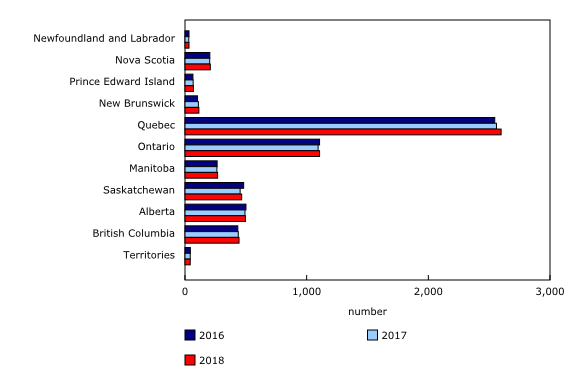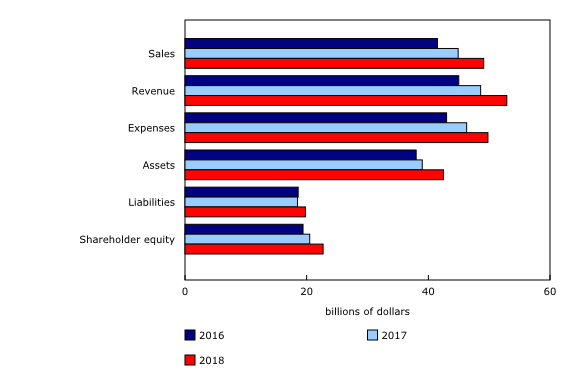Co-operatives in Canada, 2018
Archived Content
Information identified as archived is provided for reference, research or recordkeeping purposes. It is not subject to the Government of Canada Web Standards and has not been altered or updated since it was archived. Please "contact us" to request a format other than those available.
Released: 2019-12-13
A non-financial co-operative is a corporation that is legally incorporated under specific federal, provincial or territorial co-operative acts, and that is owned by an association of persons seeking to satisfy common needs, such as access to products or services, sale of products or services, or employment. Two-thirds (66.6%) of active non-financial co-operatives are consumer co-operatives, 16.1% are producer co-operatives, 9.4% are multi stakeholders, 6.6% are worker co-operatives, and 1.3% are federations.
Co-operatives maintain their impact on the Canadian economy
In 2018, there were a total of 5,846 active non-financial co-operatives in Canada. Quebec had the largest share of active co-operatives (44.4%), followed by Ontario (18.9%). In 2018, Canadian co-operatives generated $52.9 billion in total revenues, held $42.5 billion in total assets, employed 103,470 people and paid $2.4 billion in salaries and wages.
More than half of active non-financial co-operatives operated in the real estate and rental and leasing industries (33.4%), in wholesale and retail trade (14.5%), and in health care and social assistance (8.7%). In 2018, 52.1% of co-operatives were non-employers (0 employees), which were active and were run by unpaid members; 44.9% were small enterprises (1 to 99 employees); 2.5% were medium-sized enterprises (100 to 499 employees); and 0.4% were large enterprises (over 500 employees). Non-profits make up about 63.2% of all co-operatives.
Financial performance rises
From 2017 to 2018, there were increases in sales (+9.4% to $49.1 billion), revenues (+9.0% to $52.9 billion), expenses (+7.5% to $49.8 billion), assets (+8.9% to $42.5 billion), liabilities (+6.8% to $19.8 billion) and shareholder equity (+10.7% to $22.7 billion).
Note to readers
A co-operative is defined as being 'active' if it has positive employment, revenue, or expenses in a given year.
Yukon, the Northwest Territories and Nunavut have been grouped as "Territories".
Estimates are based on domestic financial and employment data as reported to Canada Revenue Agency.
All non-financial co-operatives included are legally incorporated under specific non-financial co-operatives acts and do not include financial co-operatives, such as credit unions and caisses populaires, which are governed by separate legislation.
The 2018 estimates are preliminary and will be revised at a later date.
For additional information, please see Innovation, Science and Economic Development Canada's Information Guide on Co-operatives.
Products
The infographic "Co-operatives in Canada, 2018," part of the series Statistics Canada — Infographics (11-627-M), is also released today.
Contact information
For more information, or to enquire about the concepts, methods or data quality of this release, contact us (toll-free 1-800-263-1136; 514-283-8300; STATCAN.infostats-infostats.STATCAN@canada.ca) or Media Relations (613-951-4636; STATCAN.mediahotline-ligneinfomedias.STATCAN@canada.ca).
- Date modified:



